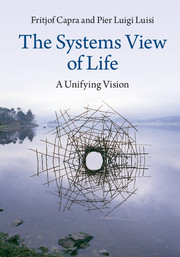Book contents
- Frontmatter
- Dedication
- Contents
- Preface
- Acknowledgments
- Introduction Paradigms in science and society
- I The mechanistic worldview
- II The rise of systems thinking
- III A new conception of life
- 7 What is life?
- 8 Order and complexity in the living world
- 9 Darwin and biological evolution
- 10 The quest for the origin of life on Earth
- 11 The human adventure
- 12 Mind and consciousness
- 13 Science and spirituality
- 14 Life, mind, and society
- 15 The systems view of health
- IV Sustaining the web of life
- Bibliography
- Index
8 - Order and complexity in the living world
from III - A new conception of life
Published online by Cambridge University Press: 05 April 2014
- Frontmatter
- Dedication
- Contents
- Preface
- Acknowledgments
- Introduction Paradigms in science and society
- I The mechanistic worldview
- II The rise of systems thinking
- III A new conception of life
- 7 What is life?
- 8 Order and complexity in the living world
- 9 Darwin and biological evolution
- 10 The quest for the origin of life on Earth
- 11 The human adventure
- 12 Mind and consciousness
- 13 Science and spirituality
- 14 Life, mind, and society
- 15 The systems view of health
- IV Sustaining the web of life
- Bibliography
- Index
Summary
Introducing the field
Having discussed the systemic conception of life in terms of self-generating, autopoietic networks, we now want to consider the question of life's origin and evolution from the same systemic perspective. Today, there is a broad consensus among biologists that biological evolution was preceded by a molecular, or “prebiotic,” type of evolution, in which the transition from nonliving to living matter was brought about by a gradual and spontaneous increase of molecular complexity until the first living cells emerged about 3.5 billion years ago (as we discuss in Chapter 10).
This idea, first stated boldly by the Russian chemist Alexander Oparin in 1924 (see Section 10.1), appears to be at odds with the second law of thermodynamics (discussed in Section 1.2.3) and with the common belief that natural processes preferentially are accompanied by an increase of entropy, or disorder.
However, there are in fact quite a few processes that bring about an increase of molecular complexity in perfect agreement with thermodynamics. The general term for such processes is “self-organization,” sometimes also called “self-assembly” (Whitesides and Boncheva, 2002; Whitesides and Grzybowski, 2002).
Some of the chemical processes of self-organization are “under thermodynamic control,” which means that they take place “spontaneously” by themselves without the necessity of imposing external forces (the term “spontaneous” is not uncontroversial from a strictly orthodox thermodynamic point of view, but here we will use this term in the common meaning of the word, indicating those reactions that, once given the initial conditions, proceed by themselves).
Information
- Type
- Chapter
- Information
- The Systems View of LifeA Unifying Vision, pp. 144 - 181Publisher: Cambridge University PressPrint publication year: 2014
